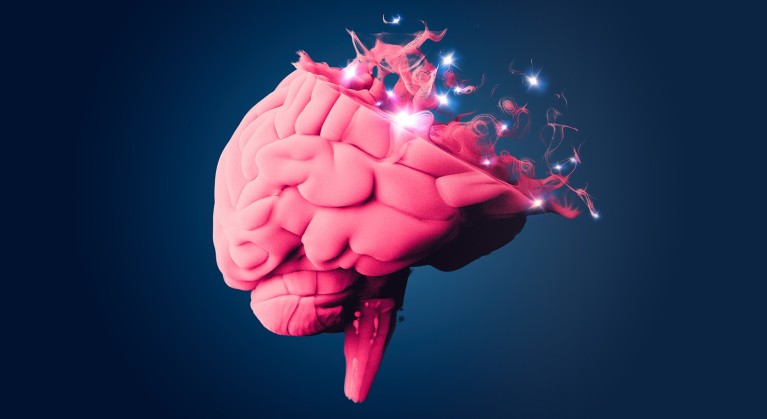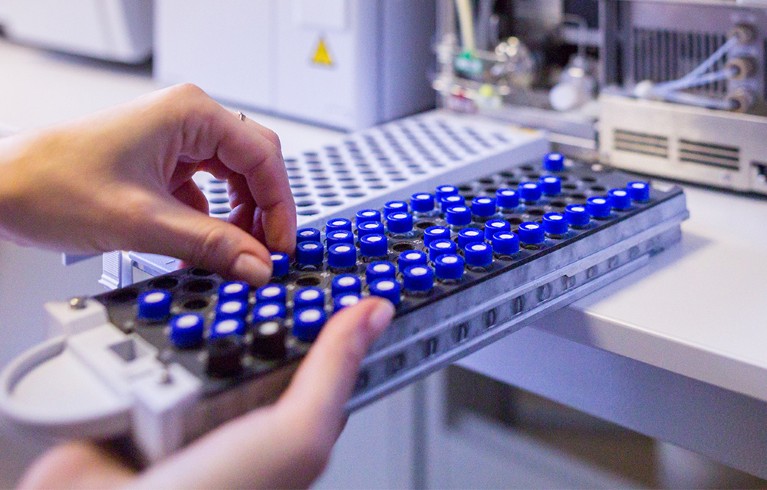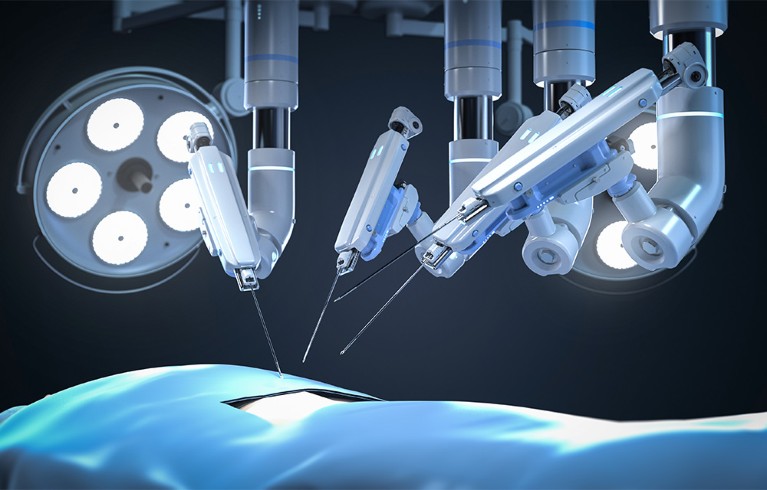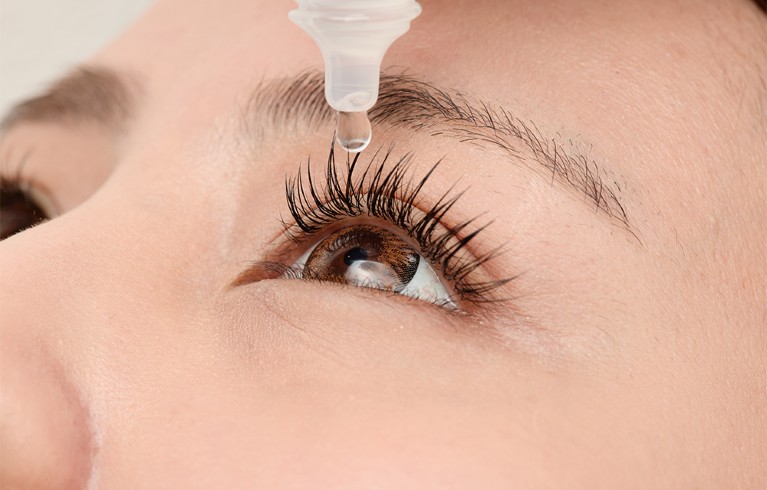
Neurodegenerative disorders such as Alzheimer’s disease pose an escalating problem in Japan’s super-ageing society. But new biomarkers promise to enable early detection and intervention.Credit: Naeblys/iStock/Getty
The exciting potential of novel medical technologies — particularly devices for diagnosis and treatment — to transform health care is just emerging. As devastating as the COVID-19 pandemic was, the outcome would have been far worse without technologies such as polymerase chain reaction testing and messenger RNA vaccines.
For Japan, with its super-ageing population, the benefits resulting from advances in medical technology can’t come quickly enough. And the country is determined to play a leading role in developing new technologies by building on past successes.
An area generating great excitement is diagnostics, with innovations such as the discovery of new biomarkers, the use of AI, and the introduction of automation and point-of-care testing promising to make diagnosis much more convenient and accurate.
Finding new biomarkers

Koichi Tanaka was only 42 years old when he shared the Nobel Prize for Chemistry in 2002 for his work in mass spectrometry.Credit: SlavkoSereda/iStock/Getty
Japan is leading the world in many of these innovations. Improvements to diagnostic techniques are helping to uncover new biomarkers. “Japanese researchers are making great progress in developing high-sensitivity assay methods, and new biomarkers are being found using them,” notes Masami Murakami, president of the Japanese Promotion Council for Laboratory Testing (JPCLT) and a distinguished professor at Gunma University. “I believe these biomarkers will eventually lead to the development of new medical treatments.”
A key example is a mass-spectrometry-based test developed by Japanese researchers for detecting amyloid-beta plaques — a hallmark of Alzheimer’s disease — in the blood. This simple test could be used to screen people to determine if they should undergo brain scans.
“Koichi Tanaka laid the foundation for this with his work on mass spectrometry, for which he won a Nobel Prize in Chemistry, and there are great expectations for Japan in this field in the future,” says Murakami. “I envisage high-sensitivity assay methods for detecting biomarkers to diagnose Alzheimer’s disease will be established in the near future.”
These advances in diagnosis are welcome news for Japan. “As Japan’s population ages, diabetes; cardiovascular diseases, such as arteriosclerosis; and neurological disorders, such as Alzheimer’s disease, are becoming increasingly prevalent,” says Murakami. “Early diagnosis and intervention are extremely important for tackling these diseases.”
In particular, blood tests for easily detecting Alzheimer’s will help address an escalating public-health crisis in Japan. “The easy measurement of biomarkers for Alzheimer’s disease will hopefully lead to early diagnosis and detection, which will result in early treatment,” says Mitsuaki Nagasawa, a professor at the International University of Health and Welfare Graduate School in Narita, Japan. “If we can develop a highly sensitive system that enables early diagnosis, it will lead to better outcomes for patients.”
Unique strengths

Japan’s first surgical robot was approved for use to treat cancers of the prostate, stomach, colon and uterus in 2022.Credit: PhonlamaiPhoto/iStock/Getty
Japan has some impressive strengths in medical technologies. Renowned for expertise in robotics and automation, it is a pioneer in developing robotic systems for testing, surgery, rehabilitation and elderly care. It is also known for its high-quality medical devices, such as imaging systems, and diagnostic and therapeutic devices.
The country is also leading the way in the area of digital transformation in areas such as telemedicine and AI-powered diagnostics. “I believe digital transformation, including the use of AI, will bring about a great revolution in the future of medicine,” says Murakami. “I’m personally interested in digital transformation, genetic diagnosis, mass spectrometry and regenerative medicine,” adds Nagasawa.
One of Japan’s greatest strengths is the collaboration between researchers at universities and in industry. “Japan is making great progress in innovation in clinical testing, especially through collaboration between industry and academia,” says Murakami.
An often-overlooked form of collaboration in Japan is that between doctors and clinical technologists. “Unlike in many countries, medical technologists and certified clinical lab physicians — who not only report test results, but also provide comments and consultation on tests — collaborate when conducting tests,” says Nagasawa. “I think this is unique to Japan.” He notes the broad scope of tests performed by medical technologists, which include specimen, pathology and physiology tests.
Rising to the challenge

The health ministry recently approved Japan’s first eye drops designed to slow the progression of myopia, or short-sightedness.Credit: Yoshiyoshi Hirokawa/DigitalVision/Getty
Japan is playing a leading role in developing medical technology in other countries. “The Japan International Cooperation Agency (JICA), with the Japan International Medical Technology Foundation (JIMTEF) and related academic societies, has been providing clinical lab support activities to developing countries for more than 30 years. They have accepted about 470 biomedical lab scientists,” says Nagasawa “JICA and JIMTEF have helped to improve medical lab technology in 88 developing countries. We will continue to make global contributions.”
One challenge facing medical technology in Japan is the strict regulatory nature of the Japanese market, which can slow the adoption of new technologies and innovations in healthcare. “While many novel diagnostics are being developed in Japan, the hurdle for obtaining approval can be high and it sometimes takes a long time,” says Murakami. “JPCLT is trying with academic societies, relevant associations and regulatory bodies to accelerate innovation in clinical testing.”
Despite this challenge, Japan is strongly committed to pursuing innovation in medical technology. Its unique set of strengths should ensure that it will come up with new solutions and technologies to address the challenges of an ageing population.
link





:max_bytes(150000):strip_icc()/Health-GettyImages-1326218528-713669ce38eb405a81854216f176d965.jpg)

More Stories
Fogarty Innovation and CRF unite to accelerate breakthroughs in cardiovascular medicine
Healthcare AI Innovator Vamsi Reddy Chagari Receives a 2025 Global Recognition Award for Medical Technology Breakthrough
Booking Health, MedBase, MedTech Spectrum, and Kyrgyzstan Medical Tourism Association Drive United Medical Expo 2025 as Central Asia’s Leading Event for Global Medical Tourism and Healthcare Innovation in Astana, Kazakhstan